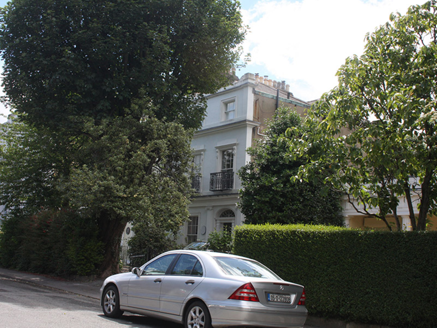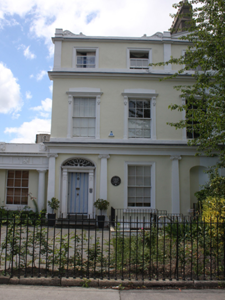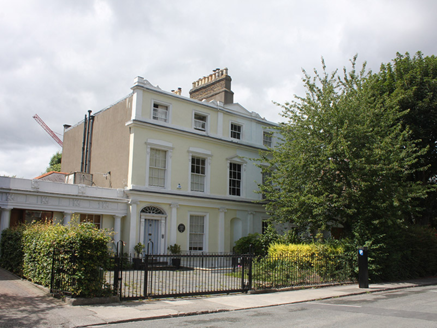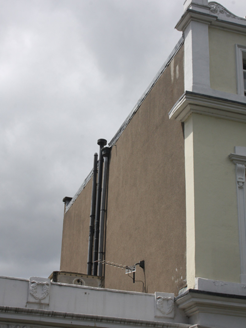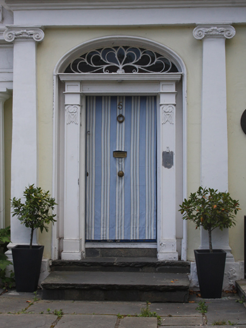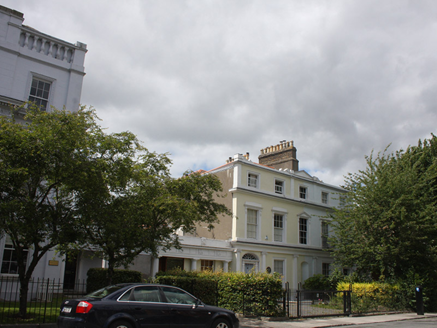Survey Data
Reg No
50110467
Rating
Regional
Categories of Special Interest
Architectural, Artistic, Historical
Original Use
House
In Use As
House
Date
1825 - 1835
Coordinates
316100, 232694
Date Recorded
25/06/2017
Date Updated
--/--/--
Description
Semi-detached three-bay three-storey house over basement, built 1830, as one of pair, with single-storey bay to south. M-profile hipped slate roof with terracotta ridge tiles, concealed by rendered parapet having stucco scrolls with anthropomorphic and foliate decoration. Pediment over north bay. Brown brick and rendered chimneystacks having clay pots. Hipped slate roof to side bay, concealed by parapet with laurel wreath panels. Rendered walls. Render pilasters to second floor, Ionic pilasters and entablature to ground floor. Round-headed niche having stone sill to ground floor. Render plinth course over basement. Fluted Doric columns supporting frieze having triglyphs and metopes, with casts of fighting lapiths and centaurs, to front of side bay. Moulded cornice over. Square-headed window openings having moulded render surrounds, those to first floor with scrolled consoles having moulded cornices and pediments. Stone sills to ground floor openings. Continuous masonry sill course to first and second floor windows openings. Three-over-three pane and six-over-six pane timber sliding sash windows. Some timber panelled shutters visible to interior. Segmental-headed door opening with moulded render surround, doorcase comprising panelled pilasters having foliate decoration supporting stepped panelled cornice. Decorative leaded fanlight. Timber panelled door. Replacement slate steps. Square-headed door openings to basement. Wrought-iron pedestrian gate and matching railings set on granite plinth wall fronting site.
Appraisal
Exhibiting motifs emblematic of the Ancient Greek revival, this composition was very much on trend at the time of its construction. The metopes of the decorative frieze are based on those from the Parthenon marbles, which had been on display in the British Museum from 1816. The highly ornamental stucco frontage creates an air of grandeur and has a unifying effect on the paired form. The central pediment and niche contribute a strong element of symmetry to the composition. Formerly overlooking a large wedge-shaped green, the houses were built as a speculative venture by Charles Jaspar Joly, the son of Jean Jaspar Joly (d.1823) who came to Ireland from France as private secretary of Lord William Fitzgerald and acquired land in the environs of what became Harcourt Terrace. Widely acknowledged as Ireland's finest surviving group of Regency houses. The premiere of 'Deirdre' by George Russell (AE) was held in the rear garden of this address on January 2nd, 1901. This building was also home to George Coffey, the noted antiquarian.
